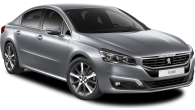Hyundai’s performance-focused N sub-brand has had a cracker of a year in 2021, aggressively expanding its line-up across a host of segments.
It comes just a few years after the Korean giant entered the space to critical acclaim with the original i30 N hatchback, and the family now includes the smaller i20 N, Kona N SUV, and now this car, the i30 Sedan N.
Perhaps the best part about the sedan though is that it doesn’t make sense. The i20 is destined to capture the hearts of young racers, the Kona is a particular stroke of market genius, getting ahead of the crowd on an impending hot SUV boom, but this sedan? This is just Hyundai flexing its corporate muscle to cater to as many enthusiasts as it possibly can.
Can lightning strike four times, though? After a flurry of launches this year, can this left-of-field sedan capture the same magic as the rest of the N family? We took one on- and off-track at its Australian launch to find out.
Hyundai I30 2022: N Premium With Sunroof
| Engine Type | Turbo 4, 2.0L |
|---|---|
| Fuel Type | Premium Unleaded Petrol |
| Fuel Efficiency | 8.2L/100km (combined) |
| Seating | 5 |
| Price From | $46,970 - $54,560 |
Does it represent good value for the price? What features does it come with?
8 / 10
The i30 Sedan N comes in a single variant wearing a single price-tag regardless of which transmission you choose. At $49,000, before on-road costs, it’s impressive value, too, landing just a few thousand dollars over the hatch version ($44,500 - manual, $47,500 - auto) whilst still sliding in underneath rivals.
It also gets a hike in equipment over the hatch, as well as further refinements to the performance gear, but does trade some items (like forged alloys) away. Hyundai tells us this is because the sedan and hatch are sourced from different factories, the hatch coming from Europe, while the sedan is sourced from South Korea.

The performance gear, the stuff you’re really paying for here, includes the same renowned 2.0-litre turbo four-cylinder from the hatch, an N-specific eight-speed performance dual-clutch automatic transmission or reinforced six-speed manual, electronically controlled and locally-tuned sports suspension with various modes, bigger brakes over the standard sedan, Michelin pilot sport ‘HN’ tyres designed specifically for Hyundai N products (these replace the Pirelli P-Zeroes which ship on the hatchback), a new integrated drive axle which is said to descend from Hyundai’s WRC program.

That last one is said to make the front end of the Sedan N firmer and lighter, and of course there’s the electronic limited-slip front differential to keep things under control in the corners. These are great, we’ll talk about them more in the driving part of this review.
The standard creature comfort stuff includes 19-inch alloy wheels, dual 10.25-inch screens (one for the dash one for the multimedia screen), wired Apple CarPlay and Android Auto connectivity, a wireless phone charging bay, synthetic leather trim for the steering wheel and seats, power adjust for the driver with heating and cooling for the front seats, dual-zone climate control, keyless entry and push-start ignition, LED headlights, and rain-sensing wipers.

The greatest feature for this car’s intended customer though, is the included track maps and timing suite. This brilliant feature accessed from the ‘N’ button in the main menu, will use the built-in navigation to automatically detect when you approach a race-track, bring up a map of the circuit, and enable a lap timer. It will show you where you are, and even automatically track laps based on the location of the start line. A stroke of genius!
This feature will support a handful of Australian tracks at launch, but Hyundai will add more as time goes on and it is able to map them.

The only options able to be equipped to the Sedan N are limited to premium paints ($495) and a sunroof ($2000). Safety is decent, too, but misses out on some key items which we’ll look at in the relevant part of this review.
This level of equipment is great considering the additional cabin features the sedan scores over the hatch, bringing the equipment level closer to that of its close rival, the Golf GTI ($53,100), and well above that of the closest performance sedan, the Subaru WRX (from $43,990). Hyundai continues to hold a fantastic value position in this space.
Is there anything interesting about its design?
8 / 10
I wasn’t convinced by the i30 sedan’s edgy new look when it moved in to replace the Elantra, but I think this N version sells the design by balancing out all of its otherwise unresolved corners.
It starts at the front with the aggressive bumper treatment. The new grille reaches out to the edges of the car finished in a contrasting black plastic, accentuating the width and newfound low-profile of the N variant. This leads your eyes to the grey and red highlight strip running across the frame of the car, again accentuating its low profile and sharp edges.

To me, though, this car’s best angle is now the rear. Otherwise awkward on the standard range, the leading beltline from the doors is now balanced out nicely with a real spoiler finished in a contrasting black. I say ‘real spoiler’ because this is a functional piece, standing apart from the body, and not just a detail lip as has been the trend on even high-performance models in the last few years.
The light profile looks angry, and nicely balances the sharp line running across the boot. Again, width is accentuated with the contrasting black rear bumper, which draws your eyes to the chunky exhaust finishes, and alloys which really fill those rear wheelarches. It’s tough, cool, interesting. Complements I wouldn’t normally level at the lower grades of this car.

Inside trades away the more analogue and symmetrical feel of the hatch for a more driver-centric and techy, post-modern vibe. The single cladding piece for the dash and multimedia functions angles toward the driver, and there’s even a plastic piece of cladding which divides the passenger from the centre console. It’s a bit odd and finished in a hard plastic, is hardly great for the passenger’s knee, especially during the kind of spirited driving this car encourages.

While the design is engaging for the driver, there are some areas where you can see this car is built to a specific price point, and one which is clearly below that of its Golf GTI rival. Hard plastic trims adorn the doors and centre divider, as well as much of the dash. Things are worse still in the back seat, where hard plastics are found on the backs of the front seats, and the soft trims have been left out of the elbow rests on the rear doors.
At least the seats with the signature ‘Performance Blue’ stitching and N logos finished in a microsuede look and feel the part.
How practical is the space inside?
8 / 10
Practicality is mostly great, owing to the Sedan N’s shape and generous dimensions. The front seat feels a little more closed in compared to the hatch thanks to its driver-centric design, and the bottle holders in the door, with the lower profile of the armrest, are near-useless for anything bigger than a standard can.
There are two huge bottle holders in the centre console, though, as well as a decently-sized armrest box, and a helpful cutaway under the climate unit for loose objects or for charging your phone. Interestingly, there’s no USB-C connectivity in the Sedan N, a feature which is notably left off of most modern Hyundai products.

What I do like about the front seat is the positioning of the shifter, which auto or manual, is brilliant, and the adjustability granted to the driver is great for the steering and seats. It’s only a shame the sedan is unable to be equipped with the lower-set and nicely cladded cloth bucket seats available in the hatch.
The biggest practicality wins for the Sedan N are found elsewhere. The back seat offers gratuitous space for someone my 182cm height, set behind my own driving position, and headroom is passable, too, despite that sloping roof. The nice seats are there, but storage is limited, with only a small bottle holder in the door, a single net on the back of the front passenger seat, and no drop-down armrest in the centre.

Rear seat passengers score a set of adjustable air vents – rare for cars in this class, although there are no power outlets for rear passengers.
The boot is an enormous 464 litres (VDA) rivalling some mid-size SUVs, let alone this car’s hatch rivals. Even the three-box WRX falls a little short with 450L. Like the WRX, though, the loading aperture is limited, so while you have plenty of room, loading unwieldy objects like chairs is best left to the hatchback.

What are the key stats for the engine and transmission?
9 / 10
Hyundai’s well-regarded 2.0-litre four-cylinder turbocharged engine appears once again in the Sedan N, with identical outputs to the hatch at 206kW/392Nm. It outpunches its direct rivals, although there is another performance tier above this now occupied by the likes of the Golf R.
This engine sounds and feels good, with plenty of low-end torque, and what Hyundai calls a ‘flat power tune’ which allows peak torque to hang around from 2100 – 4700rpm as the power gradually rises through the rest of the rpm range.

It combines nicely with either the freshly tweaked six-speed manual, or the new eight-speed dual-clutch automatic transmission, which is a world apart from the seven-speed unit used elsewhere in Hyundai’s range.
This automatic even features a smart roll-on feature to iron out the worst dual-clutch characteristics, like hesitant response and low-speed jerkiness in traffic.
The i30 Sedan N can sprint from 0-100km/h in 5.3 seconds when equipped with the dual-clutch or 5.8 seconds with the manual.
How much fuel does it consume?
7 / 10
Regardless of transmission choice, the i30 Sedan N wears a claimed combined cycle fuel consumption figure of 8.2L/100km. This sounds about right to us, but we’re unable to bring you a real-world figure from this launch review as we drove a variety of cars in a variety of conditions.
Like all N products with this engine, the Sedan N requires mid-shelf 95RON unleaded fuel. It has a 47-litre tank.
Warranty & Safety Rating
What safety equipment is fitted? What safety rating?
7 / 10
There’s a decent suite of active equipment available on the Sedan N, but just like its hatch sibling, it’s missing some key items due to a design limitation.
Standard gear includes city-speed auto emergency braking (AEB) with pedestrian detection, lane keep assist with lane departure warning, blind-spot monitoring with rear cross-traffic alert, driver attention alert, high-beam assist, and safe-exit warning.
The AEB system is limited and misses out on features as the N version of the sedan is unable to be equipped with a radar suite and operates using a camera only. Importantly, this means it also misses out on features like adaptive cruise control, cyclist detection, and junction assist.
The Sedan N also only gets six airbags instead of the seven available on the hatch and was yet to be rated by ANCAP at the time of writing.
What does it cost to own? What warranty is offered?
9 / 10
The i30 Sedan N is covered by Hyundai’s standard five year and unlimited kilometre warranty. Why such a high score when Kia’s related Cerato sedan is covered by seven years? Two main reasons. First, the servicing during that five-year warranty period is ridiculously cheap for a performance car, coming in at just $335 a year. Second, Hyundai even allows you to drive this car on the track at non-timed events, change the wheels and tyres, all while keeping the warranty intact (within reason).

Obviously, we’d encourage you to read the fine-print before going ahead, but simply the act of not outright excluding any track use is outstanding in our books.
What's it like to drive?
9 / 10
The Sedan N immediately impresses, with the key elements which made the hatch so alluring front and centre. The interior layout, and immediate engine response and aural atmosphere let you know you’re in for an enjoyable drive immediately.
Obviously, this car is quick in a straight line, but both transmissions make applying that force to the ground a breeze. So too, do the new Michelin tyres, which work alongside that brilliant differential to make cornering stupid amounts of fun.

I wouldn’t call it scalpel precision, as you can feel the electromechanical magic at work trying to harness understeer, as well as a deal of play from the rear, but that’s perhaps what grants these N cars their greatest attribute, they’re cheeky.
The ESC and diff work together with the computerised drive modes to let you have a bit of fun and slip this car about on track, whilst also reining it in before it gets really unsafe. The exhaust, too, is loud, but only obnoxious in Sport mode, complete with the snap-crackle-pop on shifts which the original N hatch became known for.

The steering is packed full of feel regardless of the drive mode you choose. I’m not sure why it’s so great on these N models, because it’s overly computer-assisted elsewhere (as on the new Tucson, for example). While Sport mode firms things up, I never had the feeling in the sedan that it was just a computer pushing back against me.
The transmission, with its roll-on feature and slick shifts, might not be quite as lighting fast as something from the VW Group, but it’s fantastic to use in a wider array of scenarios, and this is another area where I think this sedan specifically shines.

The depth of its drive modes are also impressive. With the adjustable steering, suspension, and transmission, it can be sedate enough to make an every-day commutes pleasant, while letting you turn enough safeguards off to make the occasional track day a hoot. Isn’t that what it should all be about for a car like this?
Verdict
The Sedan N is another win for Hyundai’s N division, which has hit it out of the park for performance offerings in the last year.
A cheeky track champ with all the creature comforts and adjustability to make the drive home a pleasant one. Where the sedan sets itself apart from its hatchback and Kona SUV siblings is its practicality with the large back seat and boot.
Note: CarsGuide attended this event as a guest of the manufacturer, with accommodation and meals provided.
Pricing Guides





.jpg)
.jpg)
.jpg)















.jpg)
.jpg)


.jpg)

.jpg)
.jpg)


.jpg)
.jpg)
Comments